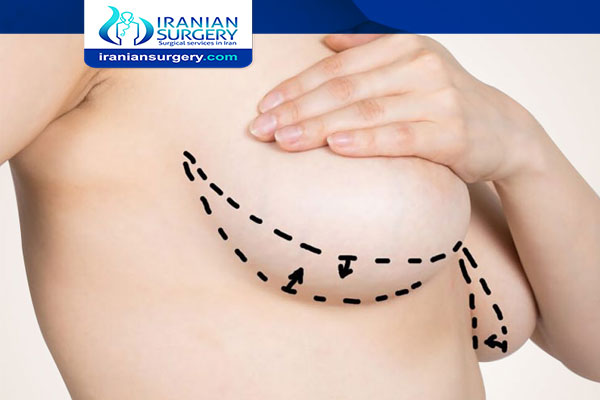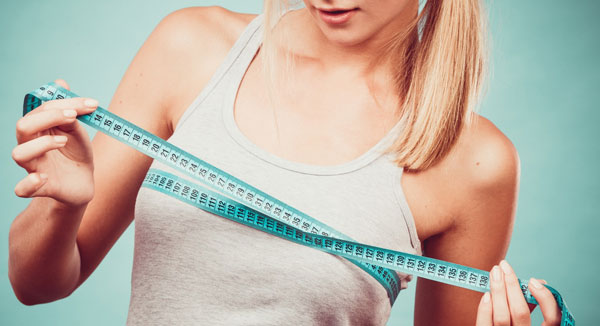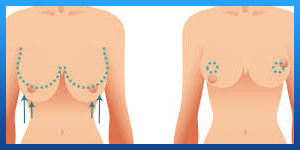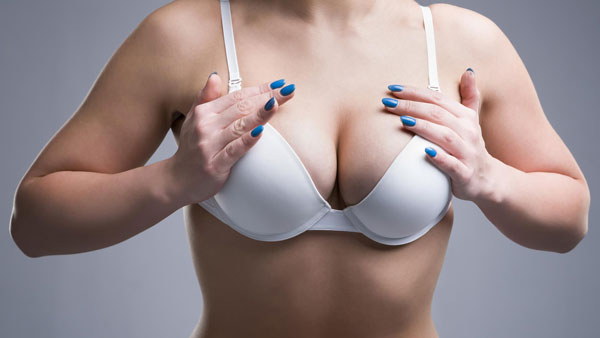Breast reduction in Iran

Breast reduction surgery in iran
How much does Breast Reduction Surgery cost in Iran?
| Cost of Breast Reduction in iRAN | ||
|---|---|---|
| Procedure | Minimum price | Maximum price |
| Breast Reduction | $US 1500 | $US 2,000 |

The average cost breast reduction in many countries is about $ 5500. The average cost of a breast reduction in Iran is about $1600 compared to the cost of breast reduction in Turkey which is $3500. Thus, if you decide to have a Breast Reduction in Iran, reading this article can improve your knowledge about cost of Breast Reduction in Iran to a great extent and help you to choose the best city and hospital to undergo Breast Reduction in Iran.
General information about Breast Reduction in Iran
The following table describes general information about Breast Reduction surgery in Iran including Breast Reduction cost in Iran, recovery time, and to name but a few.
General Information |
|
Cost | $ 1500 - 2000 |
Anesthesia | General |
Hospital Stay | 1 Day |
Back to Work | 1 to 2 Weeks |
Duration of Operation | 3-5 Hours |
Minimum Stay in Iran | 7 Days |
In this article we provide you with a comprehensive description of Breast Reduction in Iran, the cost of Breast Reduction in Iran and the best Iranian Breast Reduction surgeons.
Further, this article will explain the cost of the best Breast Reduction surgeons in Iran and the cost of Breast Reduction in Iran Tehran, cost of Breast Reduction in Iran Shiraz and cost of Breast Reduction in Iran Mashhad.
Read more about : Breast Augmentation with Fat Transfer
Read more about : Enlarged clitorious condition pictures

About Iranian Surgery
Iranian surgery is an online medical tourism platform where you can find the best cosmetic Surgeons in Iran. All cosmetic surgeons working with Iranian Surgery specialize in plastic surgery and perform cosmetic surgeries in well-equipped hospitals, so after Breast Reduction surgery in Iran you will face the least possible complications.
For more information about the cost of Breast Reduction in Iran and to schedule an appointment in advance, you can contact Iranian Surgery consultants via WhatsApp number 0098 901 929 0946. This service is completely free.

Read more about : Virgin tightening surgery before and after
All you should know about Breast Reduction surgery
What is Breast Reduction?
Breast reduction surgery, also known as reduction mammoplasty, is a procedure used to remove excess fat, tissue and skin from the breasts.
In Fact, Breast reduction is a cosmetic surgery procedure that reduces the size and weight of large, heavy breasts, helping to create a more aesthetically pleasing breast contour that is better proportioned to a patient’s body. By removing excess breast tissue, fat, and sagging, stretched skin, a cosmetic surgeon can not only make the breasts smaller, lighter, and firmer, but also improve breast symmetry and eliminate sagging.
Breast reduction surgery might also help improve your self-image and your ability to participate in physical activities.
Breast reduction in Iran is often preformed along with breast lift, so that your smaller breasts are lifted into a higher, and more youthful position.
Read more about : Rhinoplasty surgery price and Before and after photo in Iran
Before Breast Reduction Surgery
When to consider Breast Reduction
. If your breasts are too large for your body frame and create back, shoulder or neck pain.
. If you have heavy breasts with nipples and areolas (pigmented skin surrounding the nipples) that point downward.
. If one breast is much larger than the other.
. If you are unhappy and self-conscious about the large appearance of your breasts.
. If you have chronic rash or skin irritation under the breasts
. If you have nerve pain
. Difficulty fitting into bras and clothing
Breast reduction surgery generally isn't recommended if you:
. Smoke
. Have certain conditions such as diabetes or heart problems
. Are very obese
. Want to avoid scars on your breasts
You can have breast reduction surgery at any age — sometimes even as a teenager. But if your breasts aren't yet fully developed, you might need a second surgery later in life.
You might postpone breast reduction surgery if you have certain future plans, such as:
. Childbirth. If you haven't started a family or your family isn't yet complete, you might wait until pregnancy isn't an issue. Breast-feeding might be challenging after breast reduction surgery — although certain surgical techniques can help preserve your ability to breast-feed.
. Weight loss. If you are interested in losing weight by changing your diet and starting an exercise program, you might wait to decide if reduction mammoplasty is for you. Losing weight can often result in changes to your breast size.
Read more about : How many cup sizes can you go down in a breast reduction?
Advantages and Disadvantages
Pros:
. Your breasts will be in better proportion with your body and will feel firmer.
. Surgery will alleviate neck, back, and shoulder pain and make it easier to breathe and exercise.
. Your clothes will fit better and you will feel more confident about your appearance.
Cons:
. You may have decreased sensation in some areas, including the nipples and areolas.
. Some women complain that their breasts and nipples look slightly uneven.
. Breast-feeding may be a problem.
These are the top three pros and cons to weigh when considering breast reduction. If you want to focus on those specifically unique to you, please consult with your aesthetic plastic surgeon.

Are you a good candidate for a breast reduction?
Women who seek breast reduction often have had children, are overweight, have a predisposition for large, disproportionate breasts, or are sensitive to estrogen. Large breasts often run in a family, inherited from mothers and grandmothers.
Following are some common reasons why you may want to consider breast reduction:
. You have backaches, neck aches, or skin irritation under your breasts.
. You have difficulty breathing and notice grooves in your shoulders from your bra straps.
. You have poor posture or numbness in parts of your breasts and upper chest from excessive breast weight.
. You find it nearly impossible to buy dresses and blouses and difficult to find tops and bras that fit.
. You are very unhappy with your appearance because of your breast size.
. You are in good health with no active diseases or pre-existing medical conditions.
. You have realistic expectations of the outcome of your surgery. You must be able to discuss what you want with your plastic surgeon so that you can reach an understanding of what can realistically be achieved.
. Your skin has adequate elasticity, so it can resume its former tightness following surgery.
. You are mentally and emotionally stable. Breast reduction requires patience and stability to deal with the healing period.
. You are old enough so that your breast development has stopped.
. You have finished having children and breastfeeding, because this can have significant and unpredictable effects on the size and shape of your breasts. Nevertheless, many women decide to undergo breast reduction before having children and feel that they can address any subsequent changes later. If you plan to breastfeed in the future, you should discuss this with your plastic surgeon
A history of irregular mammograms, undiagnosed lumps or other types of masses, severe obesity, diabetes, wound healing disorders, current breastfeeding, smoking, clotting disorders or a family history of them, and heart or circulatory disorders are all contraindications for breast reduction.
If you are in good general health and have a positive attitude and realistic expectations, you are most likely a good candidate for this procedure.
Read more about : How to pop a bartholin cyst yourself?
Risks and Complications
Fortunately, serious risks of breast reduction surgeries are rare and the satisfaction rate with these procedures is high. The overall complication rate is small if the operation is done by an experienced plastic surgeon operating in an accredited facility.
All surgical procedures have some degree of risk. Some of the potential complications of all surgeries are:
. Adverse reaction to anesthesia
. Hematoma or seroma (an accumulation of blood or fluid under the skin that may require removal).
. Infection and bleeding
. Removal of or loss of sensation in the nipples and skin surrounding the nipples (areolae).
. Scarring
. Allergic reactions
. Damage to underlying structures
. Unsatisfactory results that may necessitate additional procedures
. Blood clots in the legs or lungs
. Difficulty or inability to breast-feed
. Differences in the size, shape and symmetry of the surgically altered left and right breasts, which might lead to further surgery to improve your appearance.
You can help minimize certain risks by following the advice and instructions of your board-certified plastic surgeon, both before and after your breast reduction.
Preparing for Your Procedure
How do I prepare for a breast reduction procedure?
Your surgeon will provide thorough preoperative instructions, answer any questions you may have, take a detailed medical history and perform a physical exam to determine your fitness for surgery.
You may be asked to have a mammogram (if you're over forty years of age), electrocardiogram (ECG) or chest x-ray. If your surgeon recommends weight benchmarks or lifestyle changes, do your best to achieve them to ensure the best results and minimize the chance of complications.

In advance of your procedure, your surgeon will ask you to:
. Avoid taking aspirin, certain anti-inflammatory drugs and some herbal medications that can cause increased bleeding.
. Stop smoking at least six weeks before undergoing surgery to promote better healing.
. Regardless of the type of surgery to be performed, hydration is very important before and after surgery for safe recovery and critical outcomes.
. Keep alcohol consumption at less than two to three drinks per week.
. Before surgery, stock your refrigerator with high-protein, low-sodium foods, including premade meals, fresh fruits and vegetables and lots of caffeine-free beverages and water. Avoid food and drink containing salt during your recovery.
. As you heal, your arms will have a limited range of motion, so store all the supplies you'll need during recovery where they're easily accessible (at counter level, not in overhead or very low cabinets).
. Stockpile movies or prerecorded programs and novels and magazines. If possible, have a speaker phone by your bed and a remote control for the TV.
. Establish a no-fail support system for the full recovery period indicated by your surgeon. This is most critical to your recovery. If you have children less than five years of age, you must have someone to take care of them for a week or two. You must not lift, drive or do laundry and cleaning for the first two weeks.
. Rest and sleep on your back continuously in an inclined position (25 to 45 degree angle) for the initial postoperative days or while significant swelling remains. You can achieve elevation with wedge pillows with an incline design or by sleeping in a recliner chair.
. Avoid hot showers, hot tubs and saunas for two to three weeks.
. Decide what you will wear for the first few days; pick items that open in front. Wear slip-on shoes so you don't have to bend.
Breast reduction surgery is usually performed on an outpatient basis. Be sure to arrange for someone to drive you home after surgery and to stay with you at least the first night following surgery.
Read more about : Liposuction in Iran
What can I expect on the day of my procedure?
Your breast reduction surgery may be performed in a hospital or clinic. Your surgeon will give you an estimate of how long your surgery will last based on the details of your surgical plan.
. You may be asked to wash your body with antibacterial soap prior to surgery.
. Make sure not to wear cosmetics (including nail polish), lotions, perfumes or other substances.
. Dress in or bring soft, comfortable clothes that you'll be able to wear after the surgery, including a top that opens in the front and shoes that slip on.
. Bring only the essentials (ID, insurance card, cell phone, etc.) and leave other personal belongings such as jewelry at home.
. Medications are administered for your comfort during the surgical procedure.
. General anesthesia is commonly used during your breast reduction procedure, although local anesthesia or intravenous sedation may be desirable in some instances.
. For your safety during the surgery, various monitors will be used to check your heart, blood pressure, pulse and the amount of oxygen circulating in your blood.
. Your plastic surgeon will follow the surgical plan discussed with you before surgery. Once the operation has begun, the surgeon may decide to combine various techniques or change a technique to ensure the best result. It is important that you feel comfortable and trust your doctor to make these decisions.
. After your procedure is completed, you will be taken into a recovery area where you will continue to be closely monitored.
. Following the surgery a bulky gauze dressing (bandage) will be wrapped around your breasts and chest or you might wear a surgical bra. Drainage tubes may be attached to your breasts.
. Before leaving for home, you (or someone looking after you) should feel capable of emptying and resetting the drains.
You will probably be permitted to go home after a short observation period unless you and your plastic surgeon have made other plans for your immediate postoperative recovery.
Read more about : Bbl surgery in Iran
During Breast Reduction Surgery
During the procedure
How is a breast reduction procedure performed?
Breast reduction surgery, which usually takes from three to five hours, is performed in a hospital or surgical center. An overnight stay is not usually required. The surgery commonly involves three incisions. After the surgeon removes excess breast tissue, fat and skin, the nipple and areola are shifted to a higher position. The areolas may be reduced in size. Skin that was located above the nipple is brought down and together to reshape the breast. Liposuction may be used to improve the contour under the arm.
. Your surgeon will use a surgical marker on your skin to indicate where the incisions will be. These markings are especially important, because your breasts change shape once you are lying on your back on the operating table.
. Most surgeons prefer general anesthesia for this procedure. A few may perform breast reduction with intravenous sedation, also known as "twilight sedation."
. Your incision pattern will depend on the size of your breasts, how much your breasts sag and where your nipple-areola complex is positioned. With each technique the areolas can be made smaller if they're too large. An areolatome, more commonly known as a "cookie cutter," is used as a circular template to make the new areola size. The cookie cutter diameter ranges from thirty-eight to forty-five millimeters. Here are some commonly used incision patterns:
. Micro incisions are used for breasts that are fatty (not fibrous) and not sagging. Liposuction is used to decrease breast size. Small incisions allow the liposuction cannula (tube) to enter the breast.
. A donut incision, or periareolar incision, is made solely around the border of the areolas.
. A keyhole incision, also known as a lollipop incision, is made around the border of the areolas and vertically down from the areolas to the breast crease.
. An anchor incision, the most common technique used by plastic surgeons, involves three distinct cuts. One incision is made around the border of the areolas; the second extends down vertically from the areolas to the breast crease and merges with a third incision along the breast crease.
. Your surgeon will remove excess breast skin and fat with a scalpel and/or cautery instrument based on the size breast you desire. If your breasts are asymmetrical (or uneven), the surgeon may remove more tissue from one breast than the other. He or she will then reshape the remaining skin and fat to create a more youthful breast shape and move the nipple-areola complex to a higher position.
. In most cases, drains will be placed in the breasts to collect excess fluid.
. Breast incisions are then closed with sutures that go from the deep tissue layers to the more superficial layers (the skin).
The goal of your aesthetic plastic surgeon and the entire staff is to help you achieve the most beautiful and natural-looking results, as well as to make your surgical experience as easy and comfortable as possible.
What are my options?
The size and shape of your breasts and how much reduction you desire are factors that will help your plastic surgeon determine the best technique for you. In some cases it will be possible to avoid the vertical incision that runs from the bottom edge of the areolas to the breast crease or the horizontal incision underneath the breast (typical components of the anchor incision). Rarely, if your breasts are extremely large, the nipples and areolas may have to be completely detached before they are shifted to a higher level. In such a case, you will have made the decision to sacrifice sensation and the possibility of breast-feeding to achieve your desired breast size. Another breast reduction option, which is appropriate only in a select group of women, is liposuction alone.
. Liposuction for breast reduction
Breast liposuction may be right for you if you have fatty breasts, need a minor-to-moderate reduction, and do not need to correct sagging. Here are some considerations:
. Results may be acceptable for women who need significant reduction but do not want the scars and loss of sensation and are willing to accept some sagging.
. With the onset of menopause, breast tissue is gradually replaced by fat, so postmenopausal women are among the best candidates for liposuction-only breast reduction.
. Patients with fibrous tissue and minimal fat in their breasts are not good candidates.
. Ptosis (sagging), poor skin condition with little tissue elasticity, and low nipple position are also contraindications.
. Liposuction alone may be used to treat asymmetry up to one cup size.
. Following liposuction of the breast, the elastic qualities of the skin cause it to contract, and subsequent uplifting of the breast contour should occur to some extent.
What will my breast reduction incisions and scars be like?
Breast reduction scars vary according to type of incision your aesthetic surgeon suggests for you. Your surgeon can conceal some incision lines in natural breast contours, but others will be visible on the breast surface. Although incision lines are permanent, in most cases they will fade and significantly improve over time. Aesthetic plastic surgeons make every effort to hide and minimize scars, with the goal of achieving the desired results with the shortest possible scar. Special tissue handling and suture techniques further minimize scars.
After breast reduction surgery
Aftercare and Recovery
You will usually need to take at least one week off from work or school for breast reduction surgery. Some people need two weeks, but each situation varies. Your surgeon will discuss how long it will be before you can return to your normal level of activity and work. After surgery, you and your caregiver will receive detailed instructions about your postsurgical care, including information about:
. Drains, if they have been placed
. Normal symptoms you will experience
. Potential signs of complication
Immediately after your breast reduction surgery
. If you've had general anesthesia, you might wake up feeling disoriented.
. You will have a surgical dressing over your upper chest and will probably have drains coming from each breast.
. You may have compression sleeves on your legs to help with circulation
. You will feel discomfort, but your medication will keep you from feeling pain.
. After the hospital staff observes you for a few hours it is likely that you will be allowed to go home, where you will need someone to care for you for the next few days.
. Before the hospital or surgical center releases you, they will show you how to care for your incisions, instructing you on how frequently to change the bandages and how to empty your drainage tubes.
. When the anesthesia wears off, you may have some pain. Any discomfort can be controlled with pain medication. If the pain is extreme or lasts long, contact your physician.
. You might notice a change in breast size, but at this point you will have significant swelling. In most cases, this swelling will remain for several weeks or even months.
Read more about : What is Cervical Cancer?
Recovery time frame after breast reduction
It is vitally important that you follow all patient care instructions provided by your surgeon. This will include information about wearing compression garments, care of your drains, taking an antibiotic if prescribed and the level and type of activity that is safe. Your surgeon will also provide detailed instructions about the normal symptoms you will experience and any potential signs of complications. It is important to realize that the amount of time it takes for breast reduction recovery varies greatly among individuals.
Here is a general idea of what you can anticipate:
. Drains. Your drains will more than likely be removed at your first follow-up appointment, which is usually within the first week after surgery.
. Incision care. Keep your incisions/suture line dry. Your surgeon may have placed Steri-Strips on top of your incision line and sutures, or you may have sutures internally and tissue glue externally to bind your incision edges. Either way, your surgeon will give you specific care instructions at your preoperative appointment or send them home with you the day of your surgery. It is best to understand it all beforehand so that your spouse, friend or caretaker will understand and assist you instead of having to learn the routine at the last minute. Be careful not to get creams, lotions or topical Arnica into the incision, because these can cause inflammation.
. Suture removal. Your incision sites will be checked and your stitches removed in approximately ten days.
. Monitoring your temperature. While you are healing from breast reduction, take your temperature regularly. An elevated temperature could mean an infection.
. Soreness and pain. You will feel tender, stiff and sore for a few days and will more than likely not want to move too much. This will subside. Be sure to take your required medications and follow the precise instructions provided by your surgeon. You may be given a pain pump; pain pumps deliver pain medications directly to the area of treatment and effectively relieve discomfort without making you groggy. Not all surgeons offer this option, so be sure to ask about it.
. Swelling. As with all surgeries, swelling will be an issue. You may be swollen for up to three to four months, although this could be very slight and only noticed by you. Your breasts, of course, will be smaller than they were before and higher, so you may not notice swelling too much. Treatment for prolonged swelling includes increasing your fluid intake (preferably water), having normal to low sodium intake, and movement, such as light walking.
. Bruising. Bruises may or may not be present after your breast surgery. This depends entirely on the patient, the technique used, and the effectiveness of the epinephrine that was administered during surgery. Other common side effects during recovery include numbness or changes in nipple sensitivity, itching around incision sites, and increased firmness or fullness in the breast tissue. These side effects should subside over the next few weeks, with some residual effects lasting up to three months after surgery.
. Sleeping. It is important to sleep with at least two or three fluffy pillows under your upper back and head, or on a wedge pillow or a recliner chair, to keep your torso elevated. This helps relieve pressure on your treatment area, reducing swelling and pain. Many patients place a pillow under their knees to prevent rolling over during the night. They also place pillows alongside them to create a sort of recovery nest.
. Bathing. You may be asked to take sponge baths until your incisions are completely closed and your sutures are no longer in place. You may not be able to wash your hair for a while, because you will not be allowed to raise your hands over your head. If you must wash your hair, have a friend assist you in the sink or basin or with a handheld showerhead.
. Activity. Even though you may not feel like it, your surgeon will probably advise you to walk and move around as soon as you can to prevent blood clots and swelling. You will be instructed not to exercise or engage in strenuous physical activities for at least three to four weeks. Don't lift anything over five pounds and try not to raise anything over your head until your surgeon releases you for activity. Take your time in healing so that you give yourself the best healing environment possible. Your full range of motion should return between six to ten weeks, depending on how well you have healed. Within six months, you should be able to do all those things you wanted to do but couldn't because of your oversized chest.

Result
Successful breast reduction surgery can relieve pain in your upper back, neck and shoulders. It might also increase your ability to participate in physical activities and promote a more positive self-image.
Although you'll see results immediately, remember that it can take months for the swelling to completely go down and the surgical scars to fade.
The final result is generally permanent — although breast shape and size can change due to factors such as aging and weight gain or loss.
What cup size will I have after a breast reduction?
It is impossible to tell you exactly what bra cup size you will be after breast reduction surgery. First of all, all bras fit different, and there is no standardization of bra sizes among bra manufacturers. In addition, many large breasted women fit their larger breasts into smaller bra sizes which may offer more support and concealment of their breasts. If you are broad and wide, you will still fit into large bra sizes as your chest circumference and breast width do not change after breast reduction. Also, we must preserve a certain amount of tissue during surgery so that the overlying breast skin and nipple heal properly with enough blood supply. Breast reduction surgery has a very high satisfaction rate; results are dramatic and you will be smaller. You cannot judge the success of the operation on your final bra cup size.
How long after breast reduction will I know my size?
Most of patients have to wait and see how things will settle down. Give it 6 months and then if patient feel that they are too small an implant might be able to be added.
Cup size after breast reduction depends on how much breast tissue to be removed. You might not be able to get the exact cup size you want.
How many cup sizes can you go down in a breast reduction?
How much your breasts can be reduced depends on your size, breast composition and goals. During your consultation, your plastic surgeons will help you determine the best plan. Most breast reduction patients go down one to two cup sizes.
How many grams is a breast cup size?
A cup size is around 200 grams.
Do breasts grow back after reduction?
Breast regrowth is rare but possible, most patients have a permanent reduction of breast size after surgery. Although not common, on occasion breast tissue can grow back after breast reduction.
Breast Reduction Surgeons
How can I find the best Breast Reduction surgeon in Iran?
Breast Reduction surgeons in Iran can make your body more appealing. Breast Reduction surgeons in Iran can also help you in making your final decision about what type of breast Reduction is more suitable for you.
It is important that you seek the assistance of experienced and skilled breast Reduction surgeons in Iran who have provided a suitable condition for people with limited budgets to do breast Reduction in Iran easily. It is worth explaining that the quality provided by Iranian surgeons is far higher than other countries including Turkey and India.
Breast Reduction surgeons in Iran, have performed numerous procedures annually which make Breast Reduction surgeons in Iran more experienced than other countries’ plastic surgeons, due to high demand and low costs of breast reduction in Iran, thousands of people travel to Iran every year to undergo breast reduction in Iran with the best breast reduction surgeons at an affordable and reasonable price.
Plastic surgery hospitals in Iran
Tehran hospitals
- Moheb Kosar Hospital
- Imam Khomeini Hospital
- Ebnesina Hospital
- Parsian Hospital
- Pasteurno Hospital
- Kasra Hospital
- Treata Hospital
Shiraz hospitals
- Mirhoseini Hospital
- Ordibehesht Hospital
- Mir Hospital
- MRI hospital
- Dena Hospital
- Abualisina Hospital
- Ghadir Mother and Child Hospital
Mashhad hospitals
- Imam Reza Hospital
- Mehregan Hospital
- Hashemi Nezhad Hospital
- Farabi Hospital
- Mehr Hospital
- Sina Hospital
- Bentolhoda Hospital
Breast Reduction cost in Iran
How much is the cost of breast reduction in Iran?
The average cost of breast reduction surgery in Iran is around $1600.
3 factors affecting the cost of breast reduction in Iran
The breast reduction cost in Iran depends on:
- Location (Tehran, Shiraz or Mashhad)
- Quality of hospital
- Surgeon’s fee
The surgeon’s fee will most likely vary depending on the length of your surgery as a result of how big your breast are and how much tissue reshaping is needed. Your surgeon’s geographical location may also factor into how much they charge. This is because doctors who live in densely populated areas usually have a higher demand for their services and higher overheads. As such, they are more expensive than less populated areas. Next, your surgeon’s experience will also influence their fee. It is important that you don’t hesitate to choose an experienced doctor, as an inexperienced doctor is potentially dangerous.
Cheapest Breast reduction cost in Iran:
Breast reduction cost in Iran Shiraz
The cheapest breast reduction cost in Shiraz is $1500. The average breast reduction cost in Shiraz is $1550 where prices can go up to $ 1600.
Breast reduction cost in Iran Tehran
The cheapest breast reduction price in Tehran is $1700. The average breast reduction cost in Tehran is $1850 where prices can go up to $ 2000.
Breast reduction cost in Iran Mashhad
The cheapest breast reduction cost in Mashhad is $1700. The average breast reduction cost in Mashhad is $ 1850 where prices can go up to $2000.


8 Comments
Could you tell me about minimum size for breast reduction?
Given your size, it sounds like your surgeon would be able to take at least that much and not make you too small. Cup sizes vary tremendously among manufacturers and patients. Remember a DDD is different in a 5’3″, 200 pound patient and a 5’3″, 125 pound patient as are the volumes needed to achieve symptomatic relief
Is it possible our breasts get bigger after breast reduction?
Although it is rare that the breasts would “grow back” after a breast reduction surgery in iran, it certainly can happen. … If the breasts do increase in size after surgery, it can be fora few different reasons: Drastic hormonal changes, such as menopause. Significant weight gain
Please answer me,can you I from breast reduction surgery?
With any surgery, there is inherent risk to going under anesthesia, though the risk is low. Risks of the actual procedure include decreased sensation or loss of sensation in the nipple, infection, poor wound healing, asymmetry and the death of fat tissue in the breast.
Age appropriate for breast reduction?
The procedure is applicable to any age, but it is recommended that it is completed after breast development.